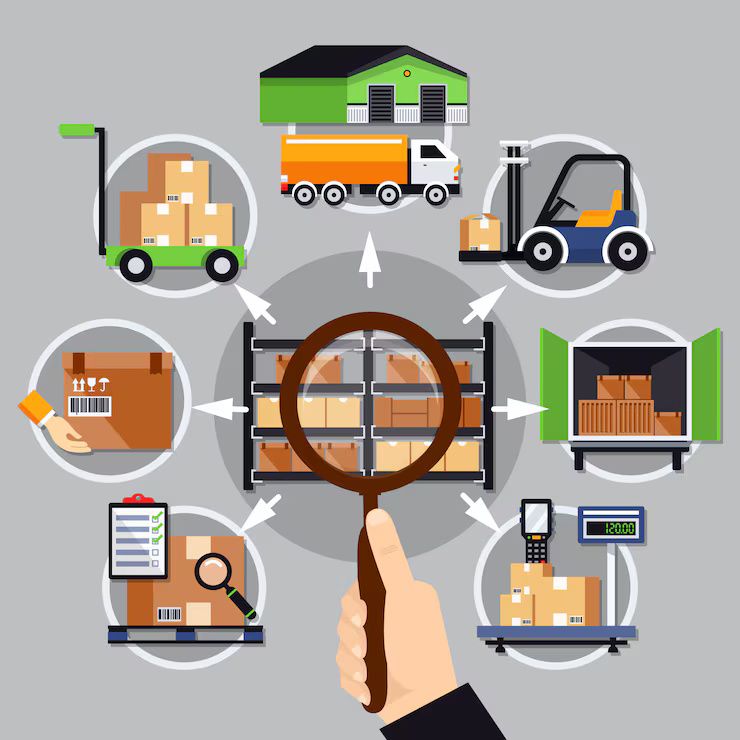Complete Overview of Kitting Solutions for Manufacturing and Warehousing
Kitting is the process of grouping, packaging, and supplying multiple parts or materials together before they are used in production, assembly, or distribution. Instead of handling items individually, teams receive a pre-organized kit that contains everything required for a task or product.
This concept exists to simplify workflows, reduce handling time, and minimize errors in manufacturing and warehousing environments.

Kitting became essential as industries adopted lean manufacturing, just-in-time supply models, and automation. The goal is to maintain consistency and ensure that every assembly line or warehouse operation receives the correct components at the correct time. Kitting also supports efficient inventory control and helps businesses avoid production delays caused by missing or misplaced parts.
Importance
Kitting has become an important operational strategy for modern manufacturing units, logistics providers, and fulfillment centers. Its importance continues to grow as industries focus on speed, accuracy, and streamlined workflows.
Why kitting matters today
-
Increasing demand for faster production and fulfillment
-
Rising need for operational accuracy and reduced human error
-
Growth in e-commerce and consumer expectations for quick deliveries
-
Higher complexity in product assemblies requiring structured component management
-
Growing emphasis on warehouse optimization and lean manufacturing
Who it affects
-
Manufacturing units assembling multi-component products
-
Warehouses storing diverse inventory
-
E-commerce fulfillment centers
-
Spare parts distributors
-
Automotive and electronics production lines
-
Healthcare, defense, and aerospace operations
Problems kitting helps solve
-
Time wasted searching for components
-
Production delays due to missing inventory
-
High labor dependency for organizing parts
-
Frequent picking errors in warehouses
-
Disorganized workflow and inconsistent assembly quality
-
Inefficiency in supply chain management
By pre-organizing and supplying required components in kits, teams can focus on completing tasks quickly and accurately, improving overall productivity.
Recent Updates
In the last year (2024–2025), several important trends and technological developments influenced kitting practices in manufacturing and warehousing.
Shift Toward Automated Kitting (2024)
Automated kitting solutions using robotic arms, conveyors, and automated storage systems became increasingly popular, especially in 3PL and manufacturing sectors. These systems help reduce manual errors and increase picking accuracy.
Smart Kitting with IoT Sensors (2024–2025)
Manufacturers integrated IoT-based sensors to track the exact movement of components during kitting. This update improves traceability, reduces shortages, and enhances real-time visibility.
AI-Based Demand Forecasting for Kits (2024)
AI-driven tools started assisting companies in planning kit requirements based on production cycles, allowing better resource allocation.
Digital Kitting Instructions
Digital screens displaying step-by-step kitting instructions became common in assembly lines. This improves standardization and supports operators in handling complex kits.
Warehouse Management System (WMS) Enhancements (Late 2024)
WMS platforms enhanced features related to kit-building, barcode verification, and material flow monitoring.
Sustainability-Focused Kitting Practices
More companies adopted recyclable containers and eco-friendly packaging for their kits to reduce waste.
Cloud-Based Kitting Dashboards
Remote monitoring dashboards now help managers track kit completion rates, material shortages, and performance indicators in real-time.
These updates show how kitting is evolving from a manual process to a smart, technology-supported workflow.
Laws or Policies
Regulations affecting kitting depend on the industry and country. While kitting itself is not regulated directly, related processes—such as warehouse operations, packaging, labor safety, and material handling—are governed by various laws.
Key regulatory areas
-
Occupational Safety and Health Standards:
Many countries follow OSHA or similar safety guidelines to ensure safe handling, ergonomics, and reduced worker risk. -
Inventory Traceability Regulations:
Particularly essential in healthcare, pharmaceuticals, and food industries, where every component must be traceable. -
Packaging and Labeling Rules:
Regulations guide labeling accuracy, container specifications, and proper material handling instructions. -
Environmental Packaging Policies:
Countries encourage the use of recyclable materials, proper waste disposal, and eco-friendly packing practices.
Regulatory Impact Summary
| Regulation Area | Purpose | Impact on Kitting Operations |
|---|---|---|
| Safety Standards | Protect workers | Encourages proper lifting tools, ergonomic designs |
| Traceability Rules | Ensure product safety | Requires accurate labeling and tracking systems |
| Environmental Policies | Reduce waste | Promotes sustainable packaging in kits |
| Industry-Specific Compliance | Maintain quality | Enhances documentation and inspection routines |
Following these regulations ensures safe, organized, and compliant warehouse and production environments.
Tools and Resources
Kitting operations rely on various tools, technologies, and resources to optimize workflows. These tools help teams organize components, reduce errors, track inventory, and monitor productivity.
Software Tools
-
Warehouse Management Systems (WMS)
Helps track inventory, picking, kit building, and material movement. -
Enterprise Resource Planning (ERP)
Integrates procurement, production planning, and kitting operations. -
Inventory Forecasting Tools
Predict component demand and prevent shortages. -
Barcode and RFID Tracking
Ensures precise component identification and movement tracking.
Hardware and Equipment
-
Mobile carts and portable bins
-
Shelving and modular storage racks
-
Digital picking displays
-
Conveyor and transport systems
-
Automated storage and retrieval systems (ASRS)
Process Management Tools
-
Component checklists
-
Standard operating procedure (SOP) templates
-
Kitting workflow diagrams
-
Maintenance tracking sheets
Online Resources
-
Industry forums and logistics blogs
-
Government guidelines on warehouse safety
-
Online calculators for storage and inventory planning
-
Material handling training courses
These tools support efficient, accurate, and well-organized kitting operations across industries.
FAQs
1. What is kitting in manufacturing and warehousing?
Kitting is the process of grouping and preparing all required parts or materials into a single package or kit before they are used in assembly or distribution. It simplifies workflows and reduces handling time.
2. How does kitting improve efficiency?
It reduces the need to search for components, speeds up assembly, minimizes picking errors, and creates a more organized workflow. This leads to faster production and fewer delays.
3. Which industries rely on kitting?
Manufacturing, warehousing, e-commerce, automotive, electronics, healthcare, aerospace, and distribution centers commonly use kitting.
4. Is kitting done manually or automatically?
Kitting can be manual, semi-automated, or fully automated depending on the facility’s size and requirements. Many companies are now shifting toward automated solutions.
5. What skills are needed for kitting tasks?
Basic inventory knowledge, attention to detail, ability to follow instructions, and familiarity with scanning or labeling tools are helpful in performing kitting tasks smoothly.
Final Thoughts
Kitting has become an essential part of efficient manufacturing and warehousing operations. By organizing components into ready-to-use kits, companies can reduce delays, improve accuracy, and streamline workflows. As industries adopt automation, AI-based planning, and sensor-based tracking, kitting solutions will continue to evolve and deliver even greater productivity. Understanding current trends, compliance requirements, and available tools helps businesses choose suitable kitting strategies for long-term success.





